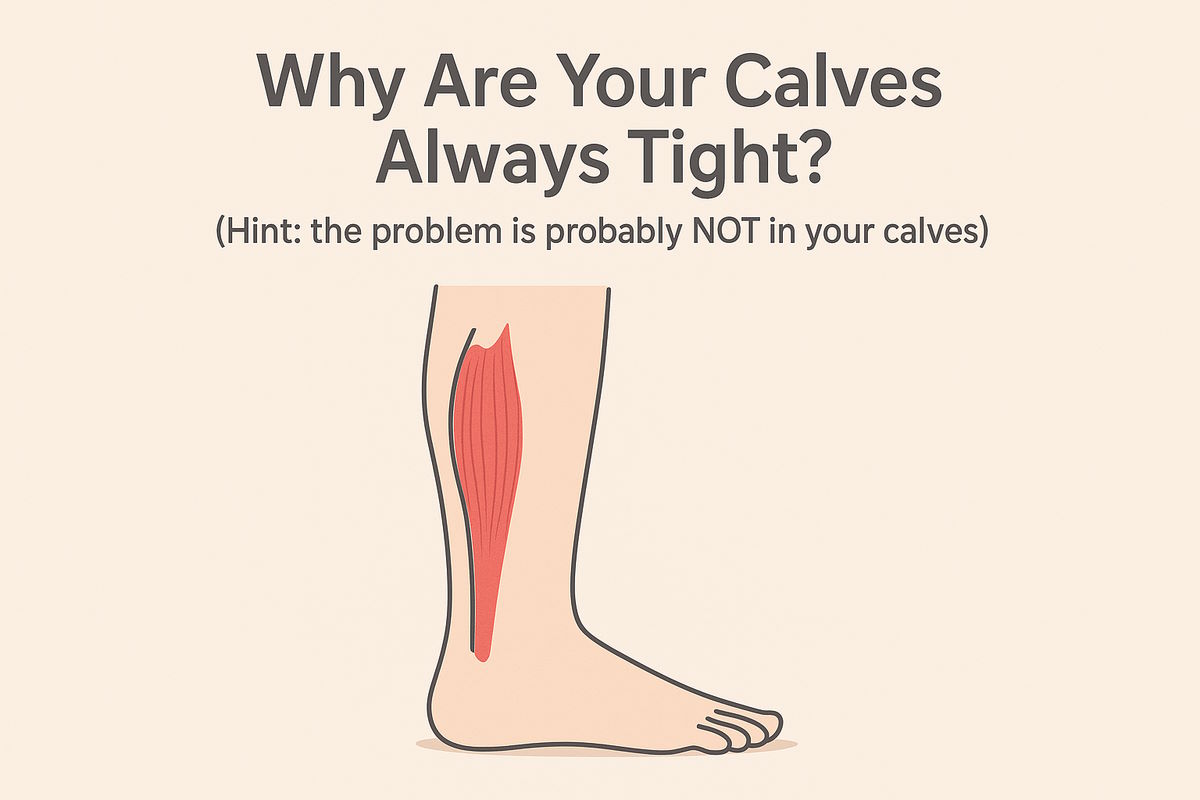(Hint: the problem is probably NOT in your calves).
If you keep stretching them and they just tighten up again, you need to read this. We reveal the shocking truth about a muscle group known as your “Second Heart” – and why it might be crying out for help.
This will change how you think about movement, circulation and chronic pain. Let’s dive in. 👇
📍 The Anatomy You Were Never Taught
It’s not just a “calf”. It’s the Triceps Surae, a complex made of two main players:
Gastrocnemius: The visible, sculpted muscle. This is your POWER CENTRE, rich in fast-twitch fibres for sprinting and jumping. It crosses both the knee and the ankle.
Soleus: A deeper, flatter muscle underneath. This is your POSTURAL WORKHORSE, packed with slow-twitch fibres for endurance and stability. It crosses only the ankle.
Knowing the difference is the key to unlocking them. 🗝️
🫀 The Shocking Truth: Your “Second Heart”
This is not a metaphor – it’s vital physiology.
Gravity wants to keep blood pooled in your legs. So how does it return to the heart? The Calf Muscle Pump.
When your calves contract, they squeeze the deep veins with huge force (creating pressures up to 200–300 mmHg!), powerfully pumping blood and lymph upwards against gravity.
When this pump is weak or inactive (hello, prolonged sitting! 🖥️), fluid stagnates. This leads to swelling, fatigue, varicose veins and even raises the risk of clots (DVT).
Strong, active calves = better cardiovascular health and more energy. Full stop. 🚫
The Real Cause of Chronic Tightness
This is why stretching alone often doesn’t work. Your calves may be tight because they are overworked, not simply shortened.
1. The Glute Connection (Synergistic Dominance):
Your glutes should be the prime movers for forward propulsion. But thanks to our sedentary lifestyle, many people have “gluteal amnesia” (weak, inhibited glutes).
So who picks up the slack? Your calves. They’re forced to do double duty – their own job PLUS the job of the glutes.
2. Chain Reaction in the Kinetic Chain:
Tightness limits ankle mobility. To compensate, your foot over-pronates, your shin rotates inward, and your knee collapses (dynamic valgus).
This chain reaction is a major cause of knee pain and even chronic lower back pain.
🤯 The Hidden Pelvic Link
Here’s a connection rarely discussed: your calves share spinal nerve roots (S1 & S2) with pelvic organs (bladder, uterus, rectum).
Through a neurological pathway called the viscero-somatic reflex, pelvic problems can trigger reflexive chronic tightness in the calves.
If you suffer stubborn calf tension and pelvic floor dysfunction, IBS or painful periods, these may be neurologically linked.
Your calves could be a mirror of your pelvic health.
🧘♀️ The Emotional Barometer
Your body stores stress. Calves, critical for the “fight or flight” response, often hold unresolved tension.
In somatic therapy, the legs symbolise grounding and our ability to “move forward” in life. Chronic tension here can reflect feelings of being “stuck”, unsupported, or anxious about the next step. Relaxing the calves signals safety to your nervous system.
✅ The Two-Part Self-Test
Check both mobility and strength!
TEST 1: Mobility (Knee-to-Wall Test)
Stand facing a wall, barefoot. Place your big toe about 7–8 cm away.
Lunge forward, trying to touch your knee to the wall without lifting your heel.
If successful, step back a little further and try again.
Goal: Aim for 10+ cm for healthy ankle mobility.
TEST 2: Strength (Single-Leg Calf Raise)
- Stand on one leg (hold a wall lightly for balance).
- Rise onto the ball of your foot as high as possible, then lower slowly.
- Repeat until fatigue.
Goal: Aim for 25+ controlled reps.
🛠️ Your Action Plan for Relief
Wake Up Your Glutes: Fix the root cause! Glute bridges, hip thrusts and clamshells are essential to unload your calves.
Targeted Stretching (critical!):
– Straight-knee stretch: Lengthens the gastrocnemius (power centre).
– Bent-knee stretch: Lengthens the soleus (stabiliser). Do both daily.
Strengthen Specifically: Build resilience with seated calf raises (for soleus) and standing calf raises (for gastrocnemius).
Activate the Pump: Break up long periods of sitting! Walk more. Do ankle pumps at your desk.
✨ The Bottom Line
Your calves are dynamic, powerful and deeply connected to your overall health – from circulation and stability to emotional wellbeing. Stop treating them as secondary and start harnessing your “Second Heart”.
👇 How did you do on the tests? Share your results and biggest takeaways in the comments!
